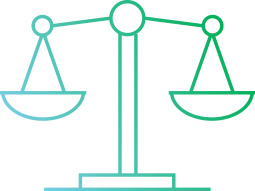QUEBEC MINERAL EXPLORATION ASSOCIATION
GOVERNANCE

Legal compliance
All laws, regulations, guidelines and policies in effect shall be respected by certified companies.

Business ethics
From a business ethics perspective, the normative requirements include indicators related to the prevention of corruption and the accountability of executives and managers. Specifically, certified companies must ensure the ethical behavior of members of the organization and adopt a code of ethics, in addition to the identification of risks of corruption, the disclosure of irregularities, training and monitoring.

Transparency and reporting
Transparency and reporting with respect to responsible governance practices involve compliance with regulatory requirements when disclosing information, as well as disclosure of information to shareholders on an ongoing basis. While the requirements of this principle relate specifically to information disclosed to investors, other indicators derived from socially responsible practices address the sharing of information to affected communities.
SOCIETY

Recognition of the concerns of affected communities
Standard requirements involve taking into account the concerns of affected communities and indigenous communities. For the affected communities, the certified company must ensure the identification and participation of potentially affected stakeholders, the sharing of information, the application of mitigation measures, the settlement of disputes and the respect of its commitments. Recognizing the concerns of Aboriginal communities also involves developing and maintaining a communication protocol.

Quality of noise, sensory and visual environment
To ensure the quality of the visual environment of the affected communities, the certified company must consult local authorities and implement measures to mitigate and remediate negative visual impacts. Local authorities must also be consulted to ensure the compliance of local noise and sensory nuisance regulations: monitoring systems needed to meet the agreed limits must be established

Respect for cultural heritage
In order to respect the cultural heritage of affected communities and Indigenous communities, measures to mitigate and remedy negative impacts on cultural heritage sites identified by competent authorities shall be implemented by certified companies.

Health and safety
Risk identification, the application of mitigation measures, the development and communication of response procedures are required to ensure the health and safety of employees and populations. For employees, the certified company must implement a prevention program, emergency measures, training and risk analysis, as well as appropriate communication and supervision systems. Other provisions must be applied when working on ice or working with particular substances.
ENVIRONMENT

Air, water and soil quality
Mineral exploration activities must be carried out in such a way as to have the least impact on the environment. With respect to air quality, particulate emissions from material transfer, dropping or handling are considered as a priority. Several other elements are regulated to ensure the quality of water and soil, including forest management, hazardous materials, water withdrawals, sediments, camps and site restoration.

Efficient use of natural resources
From an efficiency perspective, the use of resources must be quantified in the aim of consumption reduction and continuous improvement. With respect to waste generation, the standard proposes to manage residual materials using the 3RV-E approach: Source Reduction, Reuse, Recycling, Recovery and Disposal. Disposal is the last resort. In addition, a waste management plan must be developed and include clear targets for reducing landfill.

Respect for sensitive areas and wildlife habitats
Verification of the presence of sensitive areas, wildlife or floristic species on the territory and the application of the mitigation or avoidance measures recommended by the various departments (federal and provincial) are mandatory. Given the diversity of species present on the territory as well as the various protective measures applicable, close collaboration with the concerned ministries is essential. Wildlife and floristic species in private territory are also protected by the standard.

Use of responsible technologies
In order to reduce their environmental and social footprint as well as the costs associated with their activities, certified companies must pay particular attention to innovation. Specifically, they must foster the acquisition of knowledge and provide information monitoring, in addition to using responsible technologies to improve the quality of the environment and to help preserve the quality of life of the communities.
ECONOMY

Local investment
Local investment is reflected in the selection of local labor and suppliers. This is important because it generates local economic benefits and promotes community development, including the sharing of knowledge and skills. The selection of local labor and local suppliers must be operationalized in a concrete and sustainable manner.

Economic efficiency
The efficient use of financial resources of certified companies involves several requirements, including the financial analysis, environmental and civil liability insurances, control on general and administrative expenses, the development and implementation of a supply policy, a periodic assessment of the appropriateness of continuation of operations, and the use of flow-through share product.


























